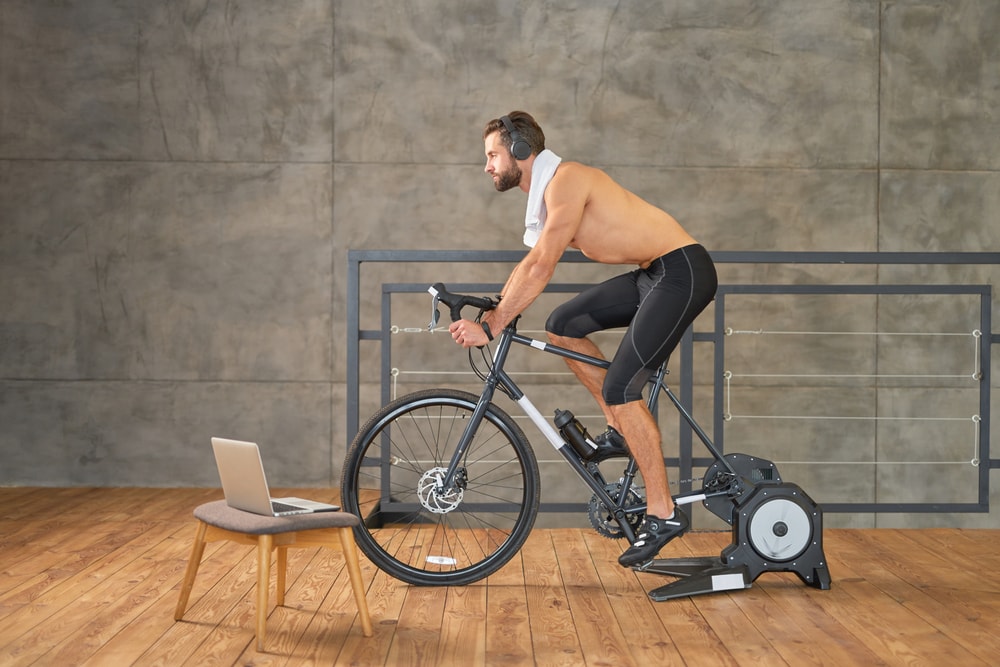Do Ultrashort Bouts of Maximal Exercise Help?

Credit: Shutterstock
I remember magazine Ads for a $15,000 exercise machine that advertised that you could work out really hard for 4 minutes a day and become fit. This was either a nutty way to make tons of money or a curious quirk of human physiology. So which was it? A recent study may suggest that this was a real thing. Let’s dig in.
The ROM Machine
I’m pretty sure this company went out of business, but back when we still bought paper magazines at the store, there were ads for an exercise machine called “ROM” (see the video above). Basically, it focused on 4 minutes of exercise a day with a different muscle group each day. This machine was seriously expensive. Back in the day, it was 15K USD when the average expensive exercise bike or treadmill cost under a thousand. In 2008 the blog Science Based Medicine did an article on it and declared (1):
“I consulted experts in several disciplines. The consensus was that 4 minutes’ exercise is better than none but that the ROM provides a complete workout only if you make up your own definition of complete workout. The injuries and heart attacks it might cause must be weighed against any good it might do. And its price is way out of line with manufacturing costs. You might want to buy it as a status symbol or a work of modern art, but if you want an effective exercise program you should probably spend your $14,615.00 elsewhere.”
So the scientific consensus was that ROM didn’t work. However, were we all short-sighted?
What is HIIT?
HIIT stands for High-Intensity Interval Training. It’s basically short bouts of ultra-high intensity exercise interspersed with low-intensity exercise. Meaning you might warm up on a bike for 5-10 minutes and then hit it hard for 30 seconds and then repeat that 4 or 5 times.
The New HIIT Study
A new Texas study really pushed the envelope on HIIT (2). They used a 4-second power cycling burst at maximum effort (VO2peak) in young healthy people. The participants trained three times a week for 8 weeks with 30 4-second bouts. They did these 4-second bouts and then rested so that the total exercise was 2 minutes a day, or half of what ROM used to sell. Did it work? Yes. There was a 13% increase in VO2 peak and blood volume, meaning the participants got fitter.
What Does This Mean to Me?
Interval training has always been a good thing for me, but I had gotten away from doing it. It’s a tried and true training method. However, the idea that you can dramatically decrease the time spent in the interval as long as the effort goes up is fascinating. This may mean that the crazy folks at ROM may have been right. Killing it for 4 minutes a day may be all you need.
The upshot? Short bouts of intense exercise work well. While 4 seconds sounds a bit short, I may try 30 seconds for 5-10 periods and see how I do!
___________________________________________
(1) Science Based Medicine. 4 Minute Exercise Machine. https://sciencebasedmedicine.org/4-minute-exercise-machine/ Accessed 8/15/21
(2) Satiroglu R, Lalande S, Hong S, Nagel MJ, Coyle EF. Four-Second Power Cycling Training Increases Maximal Anaerobic Power, Peak Oxygen Consumption, and Total Blood Volume. Med Sci Sports Exerc. 2021 Jul 12. doi: 10.1249/MSS.0000000000002748. Epub ahead of print. PMID: 34310498.

If you have questions or comments about this blog post, please email us at [email protected]
NOTE: This blog post provides general information to help the reader better understand regenerative medicine, musculoskeletal health, and related subjects. All content provided in this blog, website, or any linked materials, including text, graphics, images, patient profiles, outcomes, and information, are not intended and should not be considered or used as a substitute for medical advice, diagnosis, or treatment. Please always consult with a professional and certified healthcare provider to discuss if a treatment is right for you.